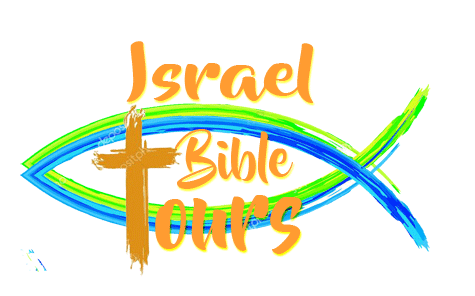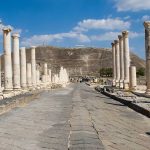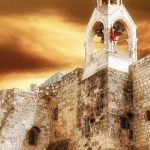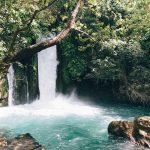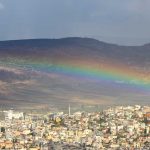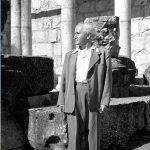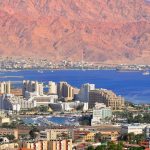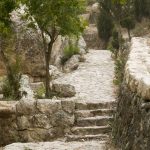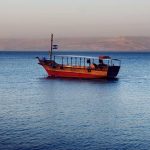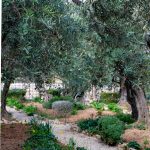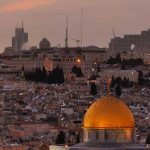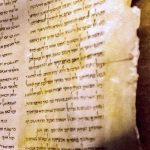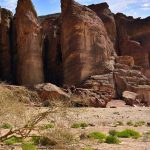Jordan River
Is a 251-kilometre-long (156 mi) river in the Middle East that flows roughly north to south through the Sea of Galilee and onto the Dead Sea.
This river holds major significance in Judaism and Christianity since the Bible says that the Israelites crossed it into the Promised Land and that Jesus of Nazareth was baptized by John the Baptist in it.
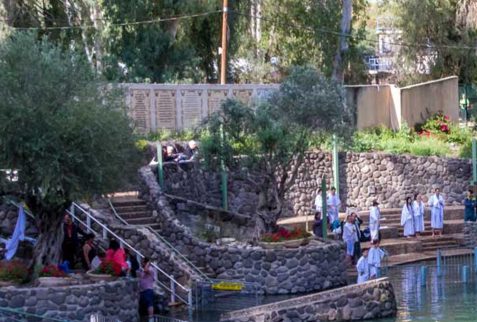
In the Hebrew Bible the Jordan is referred to as the source of fertility of a large plain (“Kikkar ha-Yarden”), said to be watered like “the garden of the LORD” (Genesis 13:10). There is no regular description of the Jordan in the Bible; only scattered and indefinite references to it are given. Jacob crossed it and its tributary, the Jabbok (the modern Al-Zarqa), on his way back from Haran (Genesis 32:11, 32:23–24). It is noted as the line of demarcation between the “two tribes and the half tribe” settled to the east (Numbers 34:15) and the “nine tribes and the half tribe of Manasseh” that, led by Joshua, settled to the west (Joshua 13:7, passim).
Opposite Jericho, it was called “the Jordan of Jericho” (Numbers 34:15; 35:1). The Jordan has a number of fords, and one of them is famous as the place where many Ephraimites were slain by Jephthah (Judges 12:5–6). It seems that these are the same fords mentioned as being near Beth-barah, where Gideon lay in wait for the Midianites (Judges 7:24). In the plain of the Jordan, between Succoth and Zarthan, is the clay ground where Solomon had his brass-foundries (1 Kings 7:46). In 2 Kings 6:1-4 the Jordan valley is portrayed as a woodland region. Biblical commentator Albert Barnes suggested that “trees were rare in most parts of Palestine, but plentiful in the Jordan Valley”.[26]
In biblical history, the Jordan appears as the scene of several miracles, the first taking place when the Jordan, near Jericho, was crossed by the Israelites under Joshua (Joshua 3:15–17). Later the two tribes and the half tribe that settled east of the Jordan built a large altar on its banks as “a witness” between them and the other tribes (Joshua 22:10, 22:26, et seq.). The Jordan was crossed by Elijah and Elisha on dry ground (2 Kings 2:8, 2:14). The prophet and wonder-worker Elisha performed two miracles at the Jordan: he healed Naaman‘s leprosy by having him bathe in its waters (2 Kings 5:14), and he made an axe head lost by one of the “children of the prophets” float, by throwing a piece of wood into the water (2 Kings 6:6).
Yom HaAliyah (Aliyah Day, Hebrew: יום העלייה) is an Israeli national holiday celebrated annually on the tenth of the Hebrew month of Nisan to commemorate the Israelites crossing the Jordan River into the Land of Israel while carrying the Ark of the Covenant as recorded in the Hebrew Bible’s Book of Joshua.
Source: Wikipedia
The New Testament states that John the Baptist baptised unto repentance[27] in the Jordan (Matthew 3:5–6; Mark1:5; Luke 3:3; John1:28). These acts of Baptism are also reported as having taken place at Bethabara (John 1:28).
Jesus came to be baptised by him there (Matthew 3:13; Mark 1:9; Luke 3:21, 4:1). The Jordan is also where John the Baptist bore record of Jesus as the Son of God and Lamb of God (John 1:29–36).
The prophecy of Isaiah regarding the Messiah which names the Jordan (Isaiah 9:1–2) is also reported in Matthew 4:15.
The New Testament speaks several times about Jesus crossing the Jordan during his ministry (Matthew 19:1; Mark 10:1), and of believers crossing the Jordan to come hear him preach and to be healed of their diseases (Matthew 4:25; Mark 3:7–8). When his enemies sought to capture him, Jesus took refuge at the river in the place John had first baptised (John 10:39–40).
Scholars have concluded that the site called Al-Maghtas on the east side has long been considered the location for the Baptism of Jesus and a place of pilgrimage though most current pilgrims go to a location on the west side, Qasr el Yahud, also long’established but not as early. This has led to choosing Al-Maghtas as a UNESCO World Heritage site, which took place in 2015.[28]
Source Wikipedia
